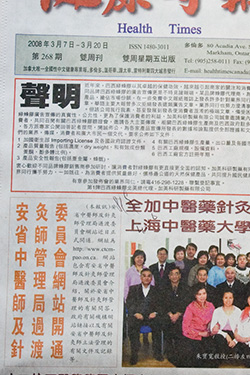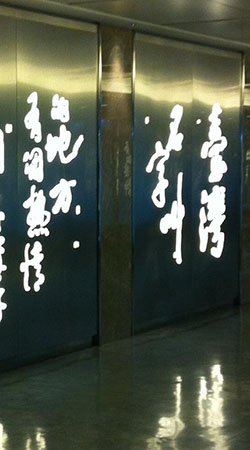Vertical CJK text that runs from left to right (no, that’s not a typo)
Left-to-right vertical writing in Chinese and Korean, a neologism ignored by the West
Just as vertical writing of CJK languages is finally being widely understood and supported in software, a new trend that does not conform to this understanding has slowly been taking hold.
Most people nowadays know that when the CJK languages are being written vertically, the words form vertical lines that proceed from the right to the left. While this is indeed the traditional way of writing and still considered the only correct way, layouts involving lines that go from left to right are increasingly being seen.
Just as horizontal writing was a response to a need to harmonize Western and CJK typographies, left-to-right (LTR) vertical writing is, I would claim, also a response to a perceived need to further harmonize the same Western and CJK typographies.
This non-traditional writing mode has not only been seen in Canada (for Korean and Chinese), but also in Hong Kong (for Chinese). It certainly is bad form, but it is still shocking that this seems to be completely unknown in the West.
Postscript (January 2013)
A friend of mine recently went for a trip to Taiwan and posted some photos from her trip, and to my surprise, I spotted some vertical left-to-right writing on one of the pictures. As it turned out, that was a welcome message put on by none other than the airport itself.
So it looks like vertical left-to-right writing is here to stay. So when will Adobe Creative Suite or QuarkXPress support this?

From the March 7–20, 2008 issue of Health Times (Toronto, Canada). The heading for the article at the lower-left corner reads “安省中醫及針灸師管理局過渡委員會網站開通”.

Signage found in Beijing, China. The text on the sign reads “无证车辆请到西大门登记领卡。 (無証車輛請到西大門登記領卡。)” (Photo courtesy of Ethan Chen)

Display calligraphy found at Taiwan Taoyuan International Airport. The text on the wall reads “有個熱情的地方,名字叫臺灣”. (Photo courtesy of Sidney Chao)
